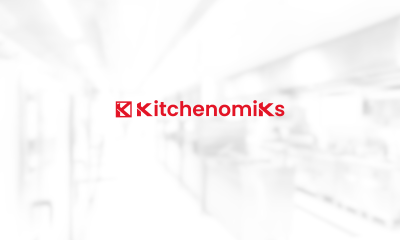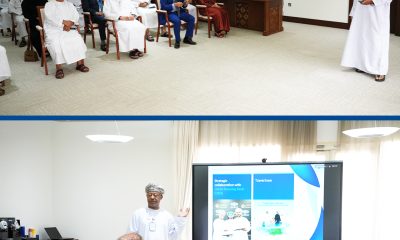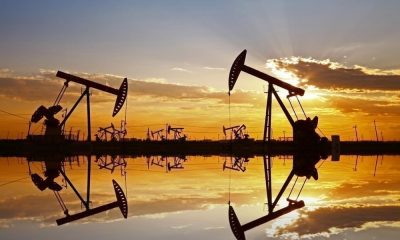Renewables
Wind Turbines Bigger Than Jumbo Jets Seen Growing Even Larger

Wind turbines that already are starting to make the biggest jumbo jetliners look small can grow larger yet, according to the chief executive officer of the company that has made more of the machines than any other.
Anders Runevad of the Danish manufacturer Vestas Wind Systems A/S said there are no limits to the scale of wind turbines designed to work offshore, where bigger blades are used to harness steadier breezes and provide more stable returns for developers than land-based facilities.
The same applies to onshore turbine technology, with no “clear end” to how high towers can grow or the size of rotors and the overall capacity of the machines to generate electricity, the executive said in an interview in Copenhagen on Thursday.
“From a technical point of view I don’t see limitations on the size of turbines and rating,” Runevad said. “It’s much more of a business case. Can you get a return on investment in much bigger turbines? I mean, theoretically of course, somewhere in the future that path will slow down, but currently actually we don’t see that.”
The largest commercially available offshore wind turbine is made by the joint venture partnership between the Aarhus, Denmark-based Vestas and Mitsubishi Heavy Industries Ltd. Each 80-meter blade weighs 35 tons and has a swept area larger than the London Eye tourist attraction. A single blade is longer than the wingspan of the Airbus A380 passenger jetliner.
Runevad was speaking after unveiling a new turbine platform that’ll allow Vestas to use fewer, more standardized components in its manufacturing process. That will allow the company to make the machines easier to customize and cheaper to build.
The new turbine system — called Eventus — is a platform of common components that will initially focus on onshore models with a V162-5.6 megawatt turbine. That will allow for 26 percent higher annual energy production compared with the previous 4.2-megawatt model. A prototype is expected to be installed in mid-2020, and another turbine will be installed from the second half of this year.
“We have a clear objective to lower the levelized cost of energy faster than the market and of course to do that we feel that this is the platform that we can live up to those requirements,” Runevad said.
The global offshore wind market will grow sevenfold in the next 10 years with cumulative installations reaching 154 gigawatts by 2030, according to research by BloombergNEF. MHI Vestas closed deals on 1.8 gigawatts in the U.K. for its 9.5-megawatt model alone.
“If you look at the next 10 years, the big opportunity for us is it to substitute coal,” Runevad said. “We can replace coal with the biggest impact on the climate positively, and it’s also the biggest potential. Generation sources that are flexible — like gas — and low cost are definitely a good combination with renewable energy for the time being.”
-

 Alamaliktistaad Magazines2 months ago
Alamaliktistaad Magazines2 months agoAlam Al Iktisaad – September 2025 Edition
-

 Magazines2 months ago
Magazines2 months agoOER – September 2025 Issue
-

 News2 months ago
News2 months agoKitchenomiKs Secures Investment of US$3.2M Led by Jasoor Ventures
-

 News2 months ago
News2 months agoOman Inaugurates ‘Hadatha’ – Its All-New Cybersecurity Center
-

 Banking & Finance2 months ago
Banking & Finance2 months agoOman Arab Bank Highlights Its Ongoing Strategic Initiatives and Future Plans
-

 News2 months ago
News2 months agoIEA Expects Global Oil Market to Remain Oversupplied in 2026
-

 Energy2 months ago
Energy2 months agoWLGA Middle East LPG Summit & Expo 2025 to be held at OCEC on November 10 and 11
-

 Real Estate2 months ago
Real Estate2 months agoAl Mouj Muscat Unveils Azura Beach Residences Phase 2: A New Chapter in Waterfront Living































You must be logged in to post a comment Login